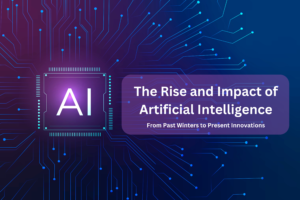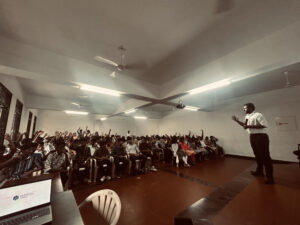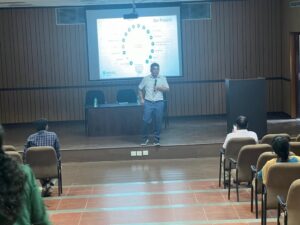
Artificial intelligence is reshaping industries, transforming our daily lives, and poised to solve some of our biggest global challenges. But how do we ensure the next generation is not just consumers of AI, but creators and innovators? The answer lies in a powerful combination: Design Thinking and Project-Based Learning.
Design Thinking: Putting Humans at the Heart of AI
Too often, AI solutions are developed in a vacuum, without deep consideration of who they truly serve or the potential biases they might carry. Design Thinking (DT) changes that. This human-centered approach involves empathizing with users, rigorously defining the problem, brainstorming with a user-focused lens, and continuous iteration based on feedback. It keeps AI development grounded, ensuring it solves real problems and avoids unintended consequences.
Project-Based Learning: Where AI Ideas Come to Life
Project-Based Learning (PBL) transforms students from passive knowledge sponges into active problem solvers. By tackling open-ended AI projects, students learn by doing. They research cutting-edge technology, collaborate like real-world teams, gain technical skills, and face the complexities of bringing an AI idea from concept to reality. PBL makes AI education relevant, engaging, and incredibly rewarding.

The DT + PBL Advantage
When Design Thinking and Project-Based Learning work in tandem, magic happens:
- Student Empowerment: Students aren’t just coding—they’re identifying problems worth solving, driving the design process, and understanding the “why” behind their AI projects.
- Ethical AI: DT encourages critical thinking about bias, fairness, and the social impact of technology from the earliest stages of project development.
- Real-World Skills: Along with technical know-how, students develop the communication, collaboration, and problem-solving skills essential in the AI workforce.
Classroom to Innovation Hub: Sample AI Projects
- AI-Powered Medical Diagnostics: Students could design AI systems to analyze medical images (X-rays, scans) for early disease detection. They might even explore AI tools that help doctors in resource-limited regions reach accurate diagnoses more quickly.
- Disaster Prediction and Response: Using AI to analyze vast datasets of weather patterns, geological data, and historical disaster trends, students could develop models that predict events like floods or wildfires with greater accuracy. Imagine an AI system that helps communities prepare for or respond to natural disasters proactively!
- AI for Food Security: Projects could focus on optimizing crop yields with AI analysis of soil data or developing smart distribution networks to minimize food waste. Students could even tackle the creation of AI-suggested alternative protein sources to reduce the environmental impact of food production.
- AI and Space Exploration: Students could tap into public datasets from probes and rovers, teaching AI to identify promising sites for future human colonies. They might even explore AI for remote spacecraft operation or develop AI-powered robots designed for hazardous space environments.
- Personalized Learning with AI: Instead of a one-size-fits-all classroom, students could design AI tutors that adapt to individual learning styles and pace. Imagine an AI companion that pinpoints where students struggle and offers tailored support or suggests supplemental resources to deepen understanding.
- Combating Climate Change with AI: Projects could use AI to analyze satellite data for climate trends, build smart energy management systems, or optimize sustainable farming practices.
- AI and the Arts: Students could explore AI-generated music, experiment with AI writing tools, and debate the ethics of AI-created artwork.
Let’s Build the Future of AI Education
Design Thinking and Project-Based Learning are the keys to nurturing a generation of AI innovators who are not only technically skilled but also creative, empathetic, and driven to make a difference. It’s time to transform our classrooms into AI innovation hubs!









